Gen 3 Samsung QD-OLED 2024 Panels and Improvements
Originally published 8 January 2024, last updated 29 January 2024

Introduction
Today we’ve got some information about Samsung Display’s 3rd generation of QD-OLED panels for 2024 which they showcased at CES in Las Vegas during January, and which they kindly took us through recently. We’ll explain the developments, changes and improvements that have been made, and look at what new panels we can expect to see launched this year for display manufacturers to make use of.
Remember this is Samsung Display, the panel manufacturer who are producing the actual QD-OLED panels used by various display manufacturers in the monitor and TV space including Dell, MSI, Samsung Electronics and others.
Video Walk Through
Description: Everything new and updated for Samsung Display’s Gen 3 QD-OLED panel technology, including a close look at the new monitor panels planned and an overview of the TV panel updates.
QD-OLED Technology Summary

A quick reminder of QD-OLED and how it differs from other OLED technologies. On the left here you can see a typical LCD panel where a backlight sits behind the liquid crystal panel and is filtered through red, green and blue sub-pixel filters and a polarizer to produce the image you see on the screen. LCD panels have been around for a long time in the monitor and TV markets.
The OLED technology that has been around for many years in the TV market, and which has also made its way in to desktop monitors in the last year or so is the one shown in the middle, so-called WOLED which is produced by LG.Display. This features a self-emissive white OLED stack which does not require a backlight like LCD’s do, and this allows for each pixel to be individually turned on and off and also supports the true blacks and incredible contrast ratios you get from OLED panels.
On WOLED panels this is then passed through the RGB sub-pixels, but there is also an added white sub-pixel used to help boost brightness before it’s pass through the backplane and polarizer. The actual order of these sub-pixels is actually current red, white, blue, green which causes some problems with text rendering on desktop monitors, although LG.Display have plans to update this over the next couple of years to improve text clarity which is something we talked about in our recent WOLED roadmap video.
QD-OLED is a little different and the OLED stack actually emits blue light and sits above the back plane. This blue light is then passed through red and green quantum dots, and an equivalent blue filter to produce the image. There’s no additional white sub-pixel used here for QD-OLED, although one important note is that there is also no polarizer. We will come back to that a bit later.
- Related content: Exploring OLED Brightness – Improvements, WOLED vs QD-OLED and the Need for New Metrics and Specs
QD-OLED First and Second Generations

In the monitor market, generation 1 QD-OLED panels were introduced in 2022 with the first monitor using these being the Dell Alienware AW3423DW that we reviewed back in May 2022. This was a first generation panel which was a 34” ultrawide format with a 175Hz refresh rate and has been adopted in loads of monitors with this spec since.

Last year in 2023 we saw Samsung develop their second generation QD-OLED panels with a 49” super ultrawide monitor panel appearing with a 5120 x 1440 resolution and a refresh rate of either 144Hz or 240Hz. We had chance to review monitors with both of these new second gen 49” panels last year with the Samsung Odyssey G95SC and the Asus ROG Swift PG49WCD.

Samsung made some improvements to their QD-OLED panels last year with gen 2, although some of the changes only really applied to the TV sized panels. The new “Hyper-Efficient Electroluminescence material” used makes its blue-emitting layer more efficient and clearer and leads to an expected brightness increase of 30% for brighter highlights. In the TV market this allowed increased brightness for HDR up to 2000 nits, although in the smaller monitor sized panels we didn’t really see any changes in that regard from gen 1 and monitor panels still reached around 1000 nits.
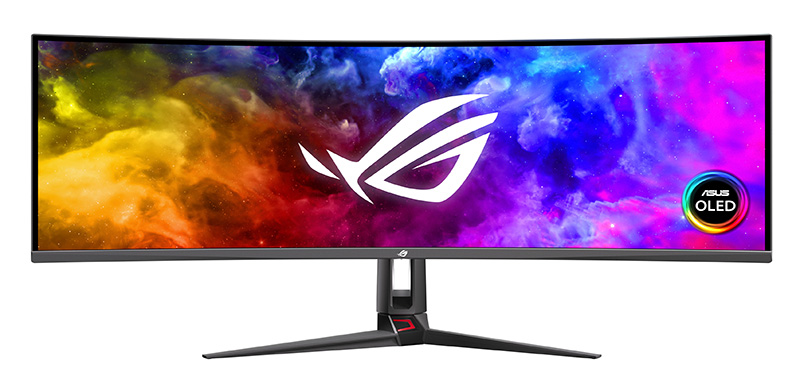
The second generation panels also feature Samsung’s most advanced pixel level optimization algorithm called IntelliSense AI v2.0. This apparently offers real-time monitoring that predicts and optimizes pixel level load and light output for each sub-pixel. This means any abnormal behavior is detected and resolved instantly which should help improve durability and lifespan, as well as helping to reduced power consumption. So the two key changes in gen 2 last year were mostly focused on improving efficiency and durability.

One other change last year that was not widely promoted by Samsung Display was an update to the sub-pixel layout of the panels which helped improve text clarity a bit in the monitor space. The subpixel shape is now more square and with higher pixel fill, and we saw improvements in text clarity when we tested the second gen panels.
QD-OLED 3rd Generation Updates
This year for 2024 Samsung are launching their third generation QD-OLED with a couple of further improvements to the panel performance and development process. This will help them deliver brighter panels, improved pixel density, improve lifespan and durability and reduce power consumption.

First up is their new Quantum Enhancer technology which uses an AI powered compensation algorithm that will help improve lifespan and durability, and which is personalised to each individual panel. This will help prolong the lifespan of the OLED panel as well as help reduce the risks of image retention or other image problems over time. This should help manage and protect screen uniformity too and Samsung Display talk about this doubling the durability of their panels.

Higher brightness is expected from the gen 3 QD-OLED panels in 2024 but this is really only applicable to the TV sized panels which will apparently be able to reach up to 3000 nits in the best cases for HDR peak highlights, an improvement of 50% compared with second gen panels from last year, while also allowing 300 nits for full 100% APL white screens.
The monitor sized panels are still limited to 1000 nits this year unfortunately so we aren’t seeing any real improvements in peak brightness from their 3rd gen QD-OLED panels for monitors it seems. We have asked for clarification as to whether brightness will be increased for larger APL window sizes, but the peak brightness is still listed as 1000 nits for 3rd gen monitor panels.
Quantum Enhancer is also being linked to the improvements in refresh rate from their 3rd gen panels, with some panels available up to 360Hz refresh rate, which will be the highest available from any OLED panel at the time they launch. More on the new panels in a moment.
The new brightness increases for the larger TV panels are made possible without increases to power consumption too with the focus on panel efficiency and environmental credentials helping to make this possible.

The second significant change for 2024 3rd gen panels is a new ultra-precise pico inkjet process that Samsung Display tell us can flawlessly deposits quantum dot ink. This allows for 60% more pixels in the same area with a very low error rate, and is the technology behind making higher pixel density panels possible, including the new 4K panels they are now producing.
New Monitor Panels for 2024

Samsung Display will be launching two new flagship monitor panels during 2024 from their 3rd generation which are already in mass production now.
There’s a 31.5” size panel, often referred to as a 32” panel, with 3840 x 2160 4K resolution and 240Hz refresh rate which will be available in both flat and curved formats. This is the new flagship panel option, offering a significant improvement in pixel density which is made possible thanks to that new pico-inkjet process. This is part of their 3rd generation of panels, only possible from the new processes and technologies added this year.
This panel will deliver 140 pixels per inch density, a significant step up from the approximate 110 PPI of their gen 1 – 34” and 2nd gen 49” panels. This will allow for higher levels of detail and clarity and finally brings 4K resolution to the OLED gaming monitor market. 4K is a very popular option at this screen size so it’s a dream panel spec for many people.
Samsung will be first to market with their 32” QD-OLED panel, but LG.Display have their competing WOLED panel coming later in the year and you can find out loads more about the specs and features of that WOLED panel in our roadmap linked above.
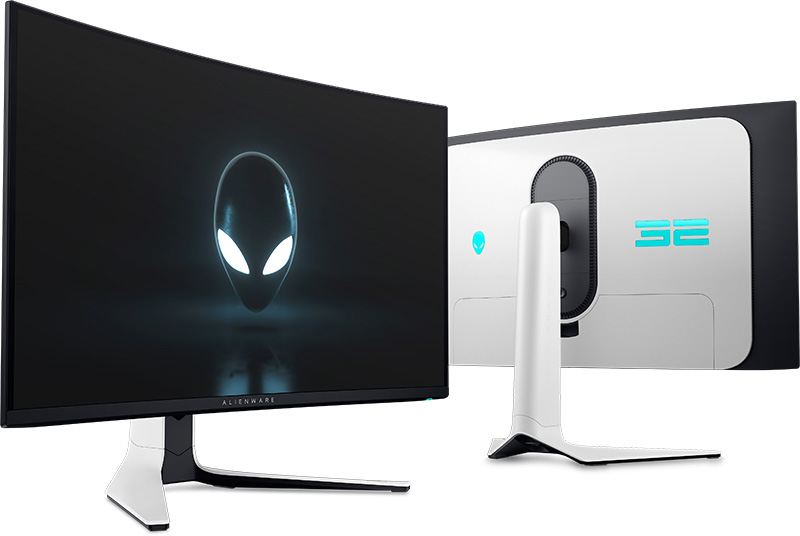
We already know of a few monitors announced that will make use of the Samsung QD-OLED panel including the Dell Alienware AW3225QF (reviewed) which will used the curved version of the panel (1700R), as well as the MSI MPG 321URX (reviewed) and Asus ROG Swift PG32UCDM (reviewed) which will use the flat version of the panel. They are expected to all be launched during Q1, with the Dell Alienware model now available in North America.
- Related content: Which is the Best 32″ OLED Monitor for You?

The other monitor sized QD-OLED panel being launched this year by Samsung Display is a 27” 1440p option with a 360Hz refresh rate. This will again be available in flat and curved versions, and we’ve seen a couple of screens announced so far which are both using the flat version. There’s the Dell Alienware AW2725DF and MSI MPG271QRX which are expected to launch during Q1, and which we’ve reviewed both of them.

This will be the highest refresh rate OLED panel available when it is launched during Q1, offering a 50% increase over the current 240Hz panels which are pretty widespread, and bringing further improvements to motion clarity, frame rates and overall end to end system latency. Thanks to the near instant response times of OLED technology, this should offer motion clarity equivalent to a 480Hz LCD panel by the way so should be super-fast.
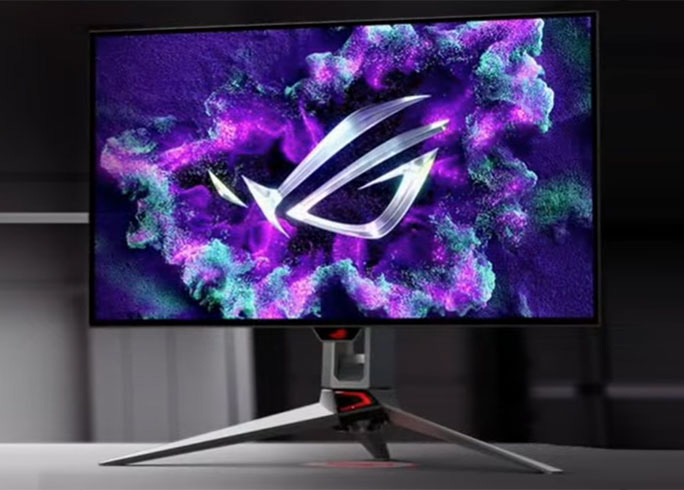
We know from our recent roadmap and press releases from LG.Display that their competing 27” 1440p WOLED panel with a higher 480Hz refresh rate is expected to be available later this year too but for now Samsung will have the highest OLED panel on the market for a little while when it launches in Q1. Asus have already announced a display for the future featuring that 480Hz WOLED panel by the way.
Other Planned Panel Sizes
We have an update on other panels Samsung are planning to produce:
- A 27″ sized panel with a 3840 x 2160 “4K” resolution is planned, and was partly showcased at CES as a “coming soon” option. This is not expected this year, and will likely form part of their 2025 panel line-up. More details are yet to be provided.
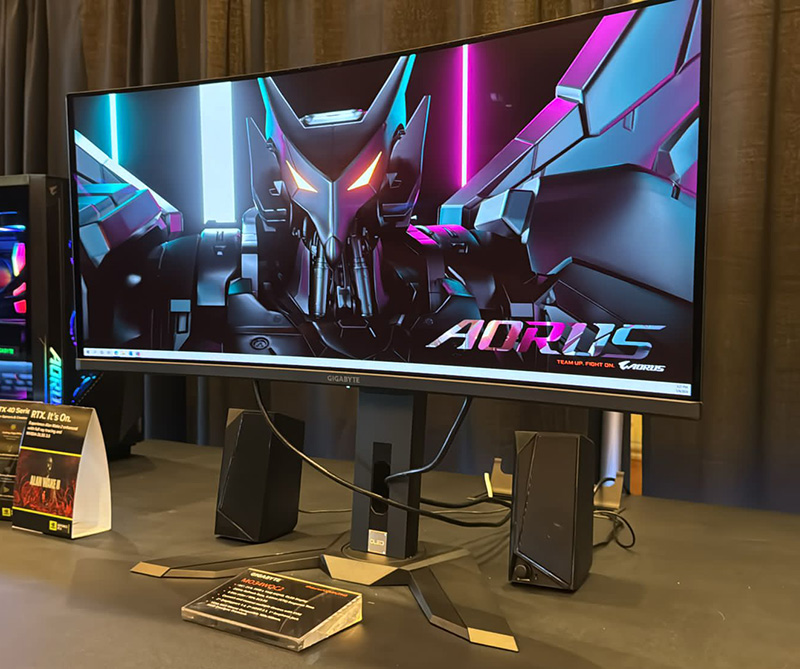
- They also have plans to provide an updated version of their 34″ ultrawide panel from Gen 1, with a 3440 x 1440 resolution again but this time with a higher 240Hz refresh rate. This is going in to production this year during we believe H1, although we are waiting for confirmation as to whether it will be officially classed as a “gen 3” panel and have features like the Quantum Enhancer. We have already had confirmation that this is the panel that will be used in the forthcoming Gigabyte AORUS MO34WQC2 that was announced at CES, and which we realised at the time was different to the super-curved WOLED panels being announced.
More details on these other new panel options as and when we get them.
Pixel Structure and Panel Coating
No changes are expected to the pixel layout or shape this year, so the benefits from generation 2 still remain for gen 3 panels.
There is also no change to the panel coating so it remains the same semi-glossy finish that provides a sharper and clearer image than current matte anti-glare coated WOLED panels that many people prefer. It does however continue to have issues with raised blacks as ambient room lighting increases which we investigated in detail recently. This is caused by the lack of a polarizer like we mentioned earlier, and the inadvertent activation of the quantum dot layer by external light. Samsung Display told us there weren’t any changes here for gen 3 panels with the handling of external light and the perceived black depth, although we will put one through our testing later in the year when the monitors are released.
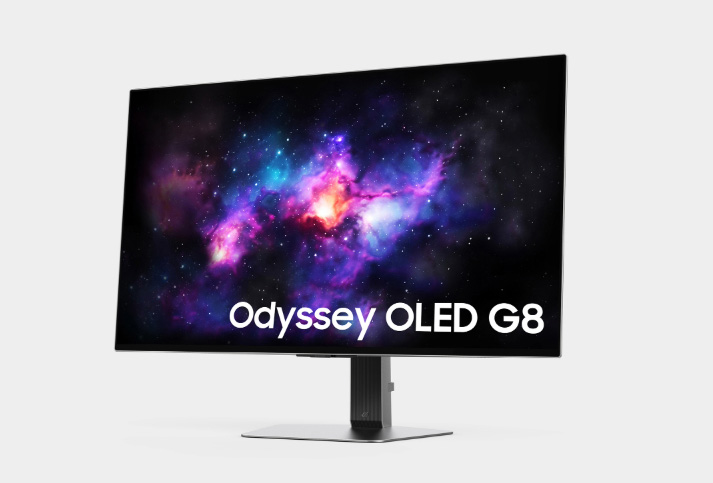
While there is no change to the panel coating of the actual QD-OLED panels, it does seem that some monitor manufacturers might apply an additional coating to the panel, presumably to try and reduce reflections further. Samsung Electronics are adopting the new 3rd gen 32” and 27” panels in a couple of announced new screens, and are adding a matte anti glare coating to the panel themselves. We are not sure what the rationale is for this at the moment or whether it will offer any improvements, but we look forward to seeing how this impacts image quality when the screens are released later this year.
Samsung Display did tell us that some of the new Quantum Enhancer technologies will also be made available via an updated TCON timing controller to the still mass produced 34” and 49” panels from gen 1 and gen 2, although to make use of the updated TCON the display manufacturers would likely need to update their production process and monitor electronics for their particular screen.
As a result we don’t expect any of the existing 34” or 49” monitors on the market to be updated to make use of these new algorithms and durability enhancing improvements from this Quantum Enhancer really, but any new monitors to market in these sizes during 2024 could potentially be using the same panels, but with the updated TCON featuring these technologies. We will have to look out for this being mentioned by the display manufacturers though, although it seems likely if a new display was launched, and the manufacturer will be using a new supply of panels, then they could be using these enhanced features.
No further monitor sized panels were announced at this time, with the focus really being on the new 32” and 27” panels.
3rd Gen QD-OLED TV Panels

In the TV space there will be new QD-OLED panels launched in sizes of 55, 65 and 77 inches. These will feature 50% increase in brightness to 3000 nits as well as the doubled durability, reduced power consumption and the Quantum Enhancer improvements we talked about earlier.

Their full monitor and TV QD-OLED panel line-up will then look like this during 2024.
Purchasing
Buy relevant products (affiliate links):
- * The Best OLED Gaming Monitors to Buy in 2024: https://tftcentral.co.uk/guides/the-best-oled-gaming-monitors-to-buy-in-2023
- * All our Gaming Monitor recommendations: https://tftcentral.co.uk/recommendations/tftcentral-recommendations-list-gaming-monitors
- * New OLED monitors for 2024, buy NOW or WAIT?: https://youtu.be/Y_3B7wvQxhU
Useful Related Links
- * MSI MPG321URX review
- * MIS MPG271QRX review
- * Asus ROG Swift PG32UCDM review
- * Dell Alienware AW3225QF review
- * Dell Alienware AW2725DF review
- * Samsung Electronics 27” and 32” QD-OLED monitors: https://tftcentral.co.uk/news/samsung-announce-expanded-odyssey-oled-line-up-for-ces-2024
- * Samsung Second Gen QD-OLED article: https://tftcentral.co.uk/articles/second-generation-qd-oled-panels-from-samsung-improvements-and-changes-for-2023
- * OLED panel roadmap 2024/25 for LG.Display: https://youtu.be/2L_OtIQEXOk
- * LG.Display 480Hz WOLED panel news: https://tftcentral.co.uk/news/lg-display-officially-unveil-the-industrys-first-480hz-oled-panel-for-ces-2024
- * The OLED Black Depth Lie – When Panel Type and Coating Matters: https://youtu.be/uF9juVmnGkY
- * Exploring OLED Brightness – Improvements, WOLED vs QD-OLED and the Need for New Metrics and Specs
We may earn a commission if you purchase from our affiliate links in this article- TFTCentral is a participant in the Amazon Services LLC Associates Programme, an affiliate advertising programme designed to provide a means for sites to earn advertising fees by advertising and linking to Amazon.com, Amazon.co.uk, Amazon.de, Amazon.ca and other Amazon stores worldwide. We also participate in a similar scheme for Overclockers.co.uk, Newegg, Bestbuy , B&H and some manufacturers.
Stay Up To Date
 |  |  |  |
| Browser Alerts | Follow on X | Subscribe on YouTube | Support Us |
Popular Trending Articles
 4th Gen Primary RGB Tandem OLED Monitors Are Here! – Gigabyte MO27Q28G Showcase August 22, 2025 Explaining 4th Gen Primary RGB Tandem WOLED and it’s benefits and specs. Including a showcase of the Gigabyte MO27Q28G monitor
4th Gen Primary RGB Tandem OLED Monitors Are Here! – Gigabyte MO27Q28G Showcase August 22, 2025 Explaining 4th Gen Primary RGB Tandem WOLED and it’s benefits and specs. Including a showcase of the Gigabyte MO27Q28G monitor Here’s Why You Should Only Enable HDR Mode on Your PC When You Are Viewing HDR Content May 31, 2023 Looking at a common area of confusion and the problems with SDR, desktop and normal content when running in HDR mode all the time
Here’s Why You Should Only Enable HDR Mode on Your PC When You Are Viewing HDR Content May 31, 2023 Looking at a common area of confusion and the problems with SDR, desktop and normal content when running in HDR mode all the time Gen 4 Samsung QD-OLED 2025 Panels and Improvements April 14, 2025 A complete look at Samsung Display’s latest QD-OLED updates and news for 2025 including new technologies, improvements and specs
Gen 4 Samsung QD-OLED 2025 Panels and Improvements April 14, 2025 A complete look at Samsung Display’s latest QD-OLED updates and news for 2025 including new technologies, improvements and specs![[Update 2] Testing 'HDR400 True Black' and 'Peak 1000' Mode Brightness on New OLED Monitors banner3](https://tftcentral.co.uk/wp-content/uploads/2024/03/banner3-130x90.jpg) [Update 2] Testing ‘HDR400 True Black’ and ‘Peak 1000’ Mode Brightness on New OLED Monitors April 27, 2024 Testing the common HDR modes on new OLED monitors to figure out which mode is brighter for HDR and for SDR content
[Update 2] Testing ‘HDR400 True Black’ and ‘Peak 1000’ Mode Brightness on New OLED Monitors April 27, 2024 Testing the common HDR modes on new OLED monitors to figure out which mode is brighter for HDR and for SDR content QD-OLED Generations Infographic and FAQ June 17, 2025 A handy infographic explaining all QD-OLED panel generations along with answers to frequently asked questions
QD-OLED Generations Infographic and FAQ June 17, 2025 A handy infographic explaining all QD-OLED panel generations along with answers to frequently asked questions
